One of the most iconic artworks in French history was painted by the leading exponent of the French Romantic School in the 19th century.
In this article, you’ll discover the ultimate list of interesting facts about Liberty Leading the People, the most famous artwork in the oeuvre of French painter Eugène Delacroix.
1. It commemorates a famous moment in French history
The history of France became extremely chaotic following the French Revolution that started in 1789. This event resulted in the execution of numerous members of the royal family, including King Louis XVI and his wife Marie Antoinette by guillotine on Place de la Concorde in Paris.
The event depicted in the Liberty Leading the People painting isn’t to be confused with the event that set this chaotic history in motion, though. It depicts the July Revolution of 1830 which took place between July 26 and 29 of that year.
This event resulted in the abdication of Charles X and the ascension of King Louis Philippe. This pretty much means that one constitutional monarchy was replaced with another. Yet another French Revolution in 1848 led to the demise of King Louis Philippe and the creation of the Second French Republic.

2. It was completed shortly after the revolution happened
Following the abdication of King Charles X, a constitutional monarchy was created and the former king left for Great Britain on August 2, 1830.
This means that the revolution was over rather quickly (compared to the first revolution) which allowed Eugène Delacroix to start and finish painting his iconic work in the autumn of that same year.
It’s a rather larger painting as well as it has dimensions of 260 × 325 centimeters (102.4 × 128.0 inches).
He mentioned in a letter to his brother on October 21 about his work:
If I haven’t fought for my country at least I’ll paint for her.
Eugène Delacroix talking about La Liberté guidant le peuple.
3. The woman in the painting is referred to as “Marianne”
The main character in the painting is a bare-chested woman who represents the people as she leads the revolutionaries to victory. This woman is called “Marianne” and has been the personification of the French Republic ever since the first French Revolution of 1789.
She’s portrayed as the goddess of liberty and represents liberty, equality, fraternity, and reason. She is depicted in countless works of French art and is depicted in all town and city halls in the country as well.
She is prominently portrayed in a sculpture at the Place the la Nation, a famous square located just south of the Pàre Lachaise Cemetery and just to the east of the historical center of Paris.
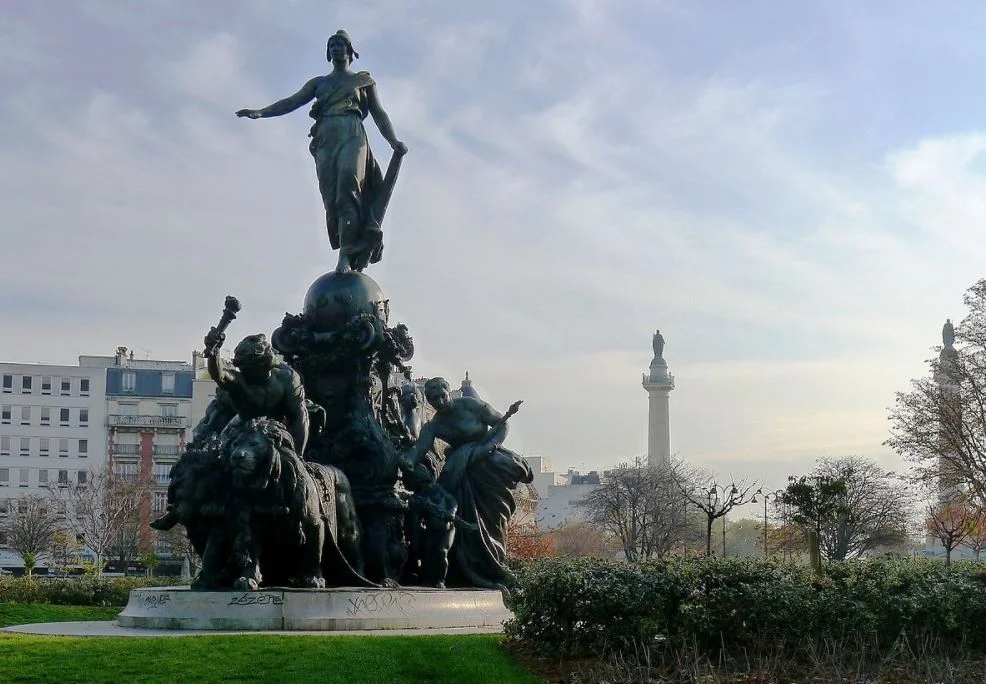
4. She was probably inspired by the portrait of an Irish female pirate
The fact that Marianne is the personification of the French Republic makes it all the more intriguing as to where Eugène Delacroix got his inspiration for portraying her.
It’s assumed that she was inspired by Anne Bonny, an Irish-born female pirate who wreaked havoc in the Caribbean together with her lover, the infamous pirate Calico Jack Rackham in the early 18th century.
A Dutch depiction of a bare-breasted and pistol-toting Bonny indeed bears a striking resemblance to Marianne depicted in the Liberty Leading the People painting.

5. Marianne wears a particular type of hat
The hat that Marianne is wearing is referred to as a “Phrygian cap,” also known as a “liberty cap.” This cap originated in eastern Europe during Antiquity in the region of the Balkans, Dacia, and Phrygia.
This cap was also worn as a sign of liberty during the American Revolution and the French Revolution of 1789. Remarkably, during antiquity, this headgear didn’t represent liberty. Instead, the Roman pileus was worn by for example freed slaves.
6. The flag in the painting also has a special meaning
Marianne is holding a flag in one hand and a bayonetted musket in the other as she leads the people over a barricade. The flag in the painting is the tricolor, now known as the French Flag, and she is waving it as she stands on top of a mound of dead bodies.
One of the most interesting facts about this flag is that it became the national flag of France because of this event. This also means that this painting played a crucial role in the history of France as it became a symbol of France and the French Republic.
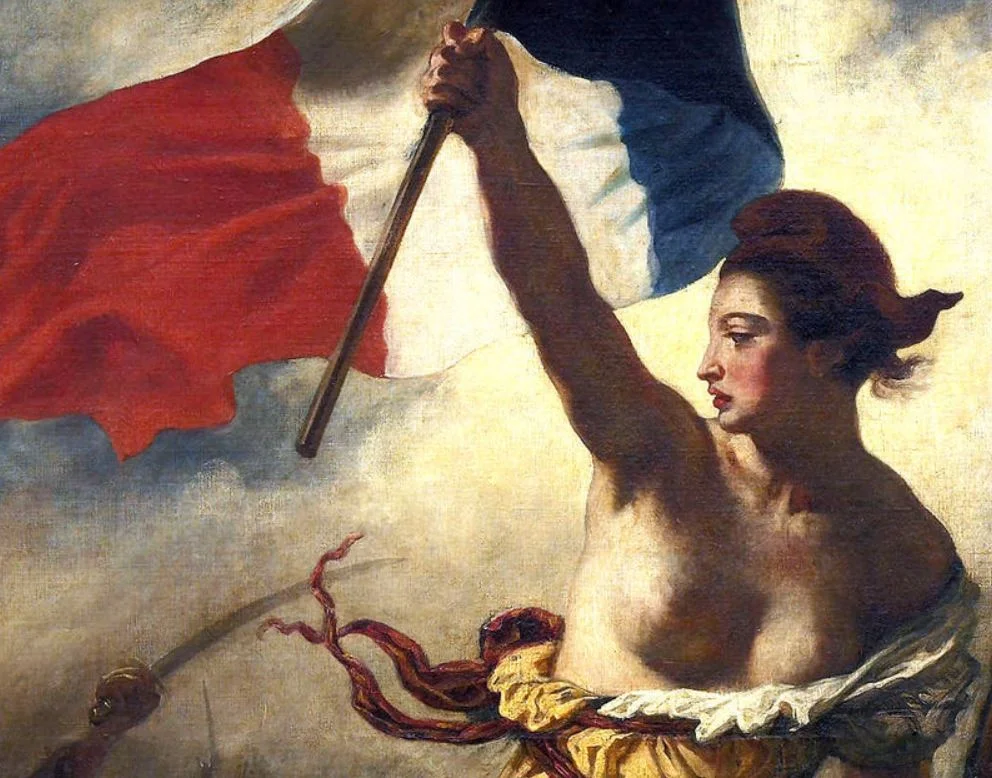
7. The other figures come from a wide variety of backgrounds
The figures in the background represent the revolutionaries, so Delacroix included a very diverse group of people. The social classes represented in the painting range from the bourgeoisie to the regular workers.
The man wearing the top hat represents the elite of French students who studied at the prestigious École Polytechnique, and the workers wearing shabby clothes. This represents the unity of the revolutionaries as they fight hand in hand, regardless of their social status.

8. Nobody knows for sure who the man with the top hat is
The man wearing the top hat is the figure who draws most attention to himself apart from Marianne. The rich student from the most prestigious schools in France picked up his weapon to fight, together with the common people.
A lot of suggestions have been made as to who the depicted man really is, but there is no general consensus among art historians. The people suggested are:
- Eugène Delacroix himself – This has been refuted by modern historians.
- Étienne Vincent Arago (1802-1892) – A French politician and co-founder of the influential newspaper “Le Figaro.”
- Frédéric Villot (1809-1875) – A friend of Delacroix and future painting curator at the Louvre Museum.
The old Arago indeed bears some resemblance to the young man portrayed beside Marianne.

9. The boy probably influenced one of the greatest 19th-century novels
On Marianne’s left-hand side we can see a young boy waving two pistols around. It’s widely believed that this boy formed the inspiration of a character in one of the greatest novels published in the 19th-century, “Les Misérables” (1862) by Victor Hugo.
This character is referred to as “Gavroche” and the events in the novel take place 2 years after the successful July Revolution of 1830.
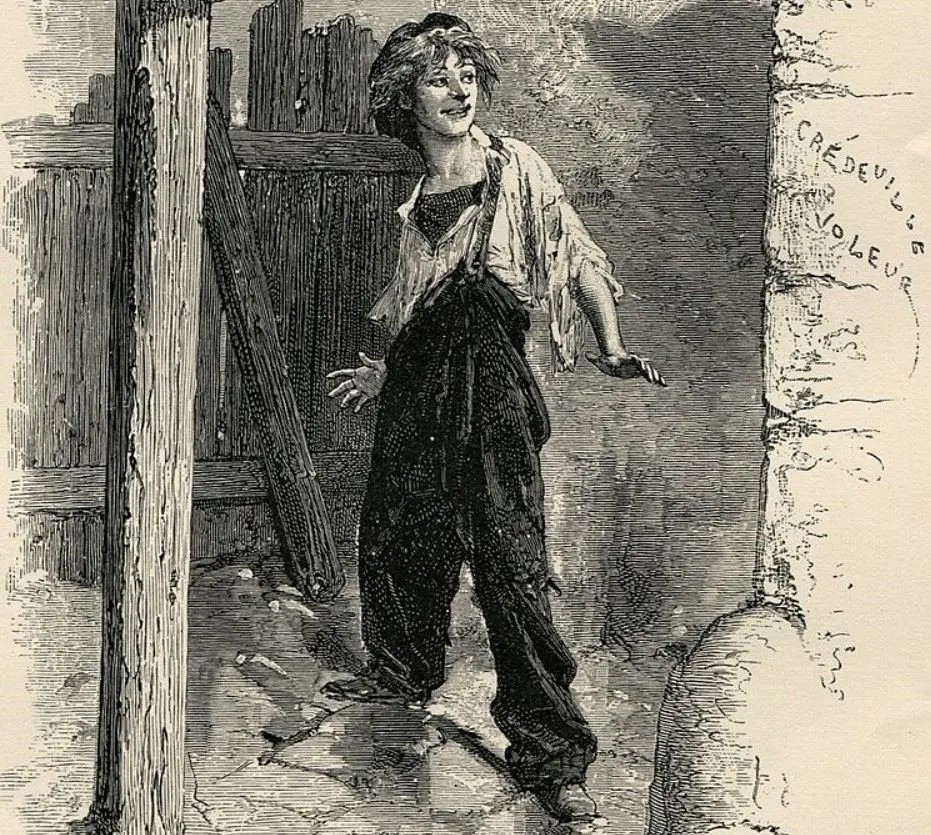
10. It influenced one of the most famous monuments in the world
One of the most fascinating facts about Liberty Leading the People is that this painting formed the inspiration for the most iconic monument in New York City, the Statue of Liberty.
French sculptor Frédéric Auguste Bartholdi became inspired to create a monument that would serve as a gift from France to the United States and eventually created “Liberty Enlightening the World,” the official name of the statue.
This just emphasizes the immense influence this painting has had on recent history!
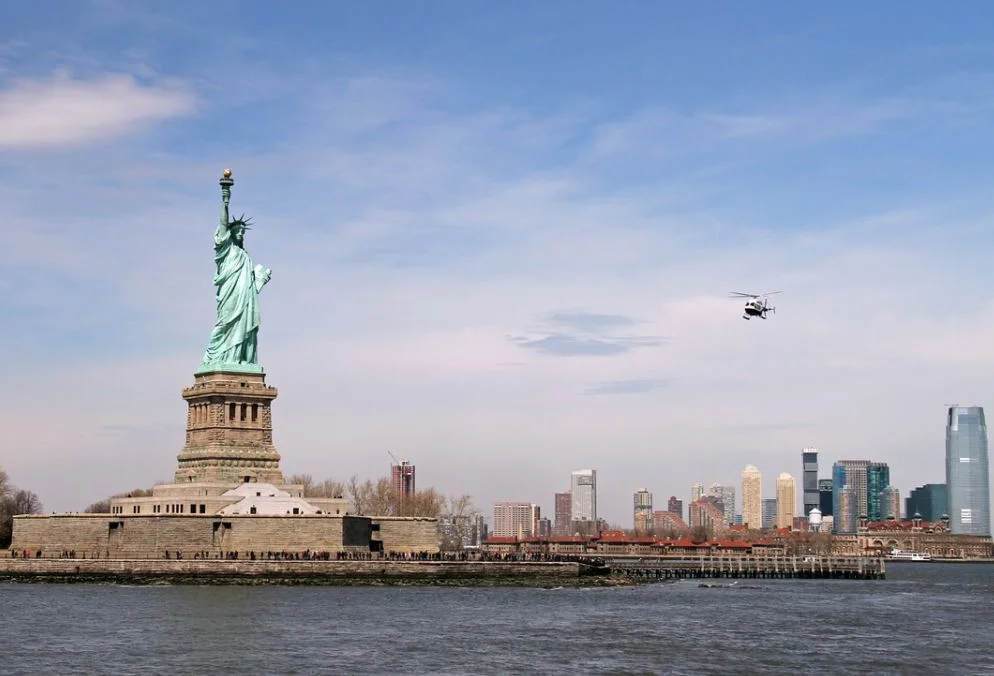
11. It was banned from public view shortly after it was created
The painting, which was bought for 3000 francs, was instantly commissioned by the newly installed government and was intended to decorate the throne room of the Palais du Luxembourg. This was pretty much to humiliate the former King Charles X who became a regular citizen after the July Revolution.
It never hung there eventually and only decorated the palace’s gallery, which also once houses the “Marie de’ Medici Cycle,” painted by Famous Baroque artist Peter Paul Rubens in the 17th century.
The painting eventually ended up being banned a few months later out of fear of its political message. After all, the current government didn’t want to be overthrown as well, right, even though this eventually happened in 1848.
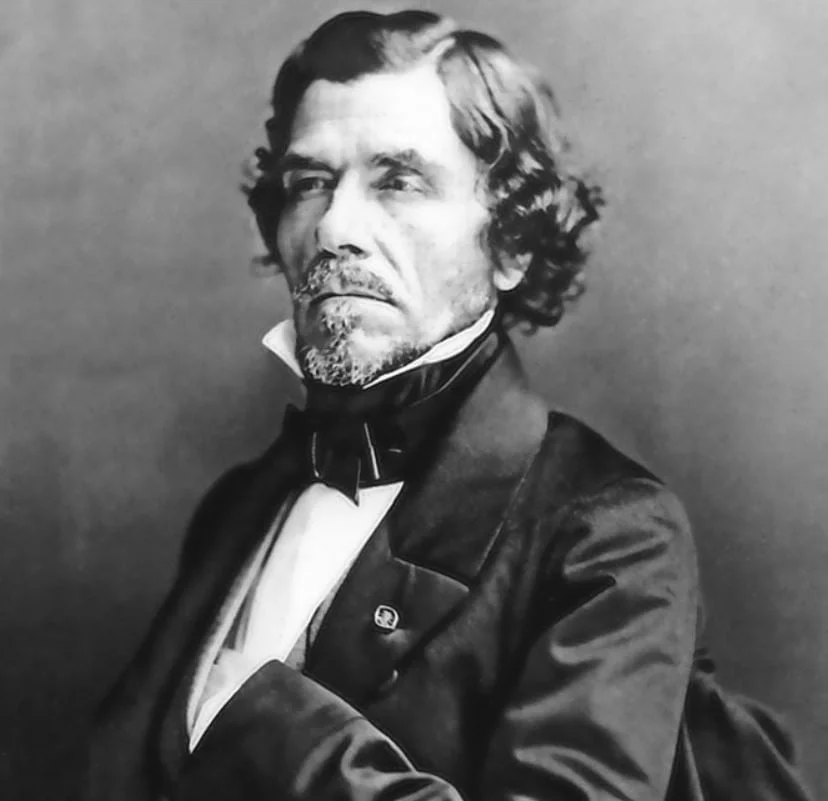
12. The painting is on public display at the biggest museum in the world
It was on public display a couple more times following its original ban, including briefly following the Rebellion of June 1832, following the restoration of the Republic in 1848, and during the Paris Salon of 1855.
The rest of the time it remained in the private collection of Delacroix himself until it finally entered the collection of the Louvre Museum in 1874, where it’s still on public display today in the “Denon Wing,” “Salle Mollien” or “Room 700!”



